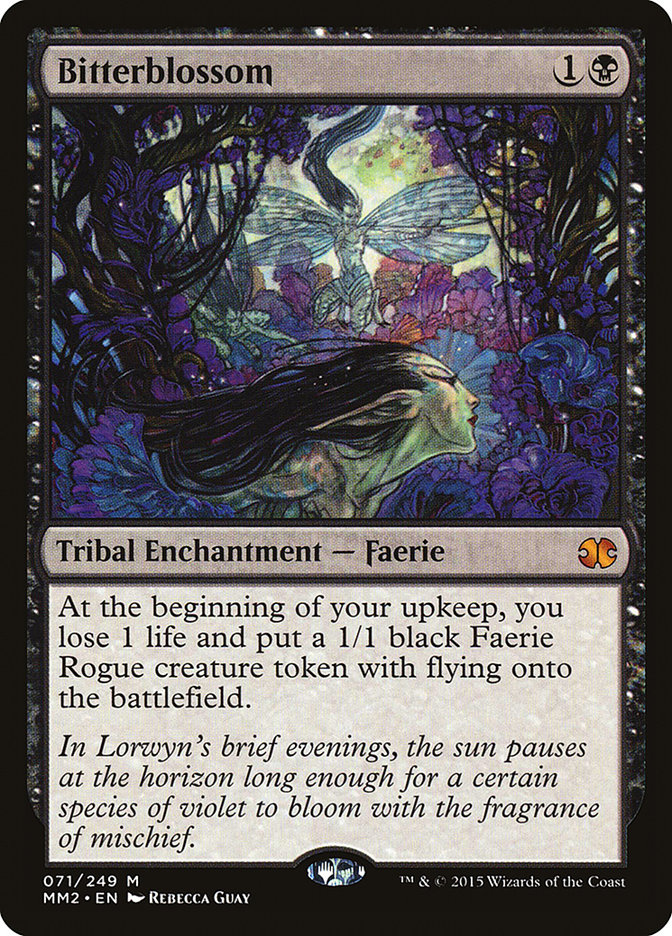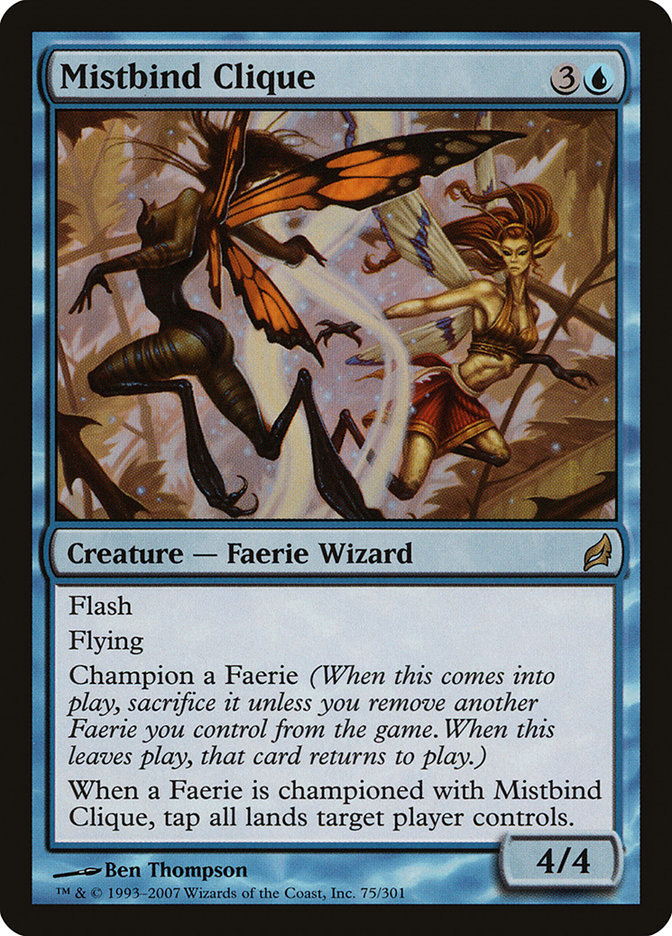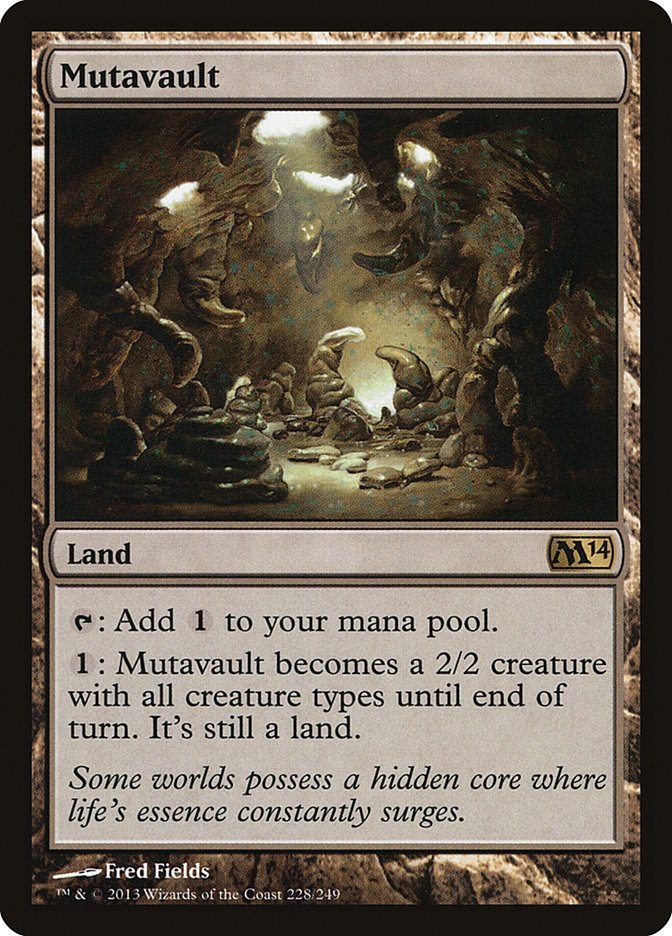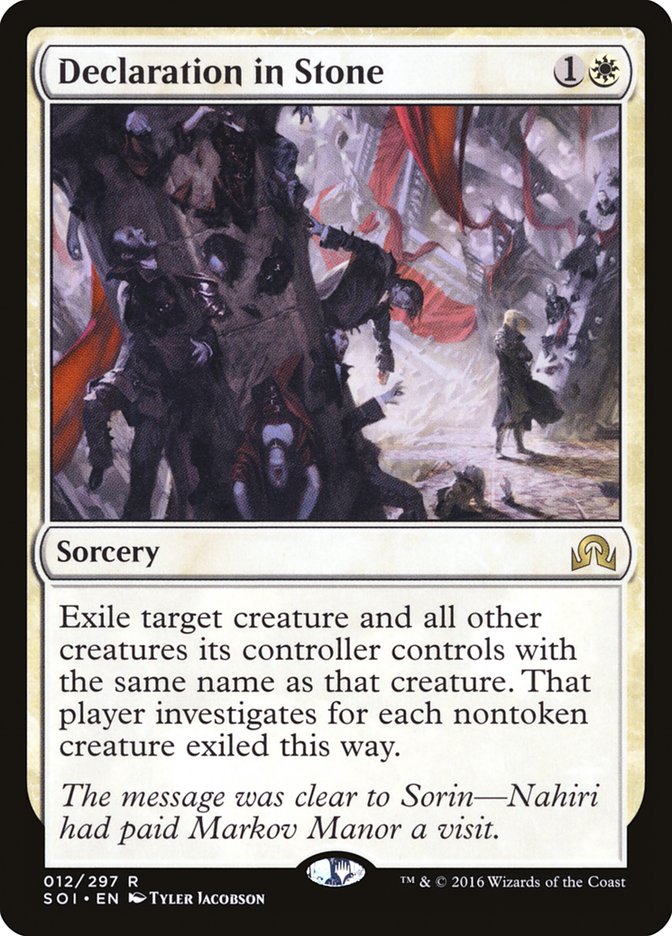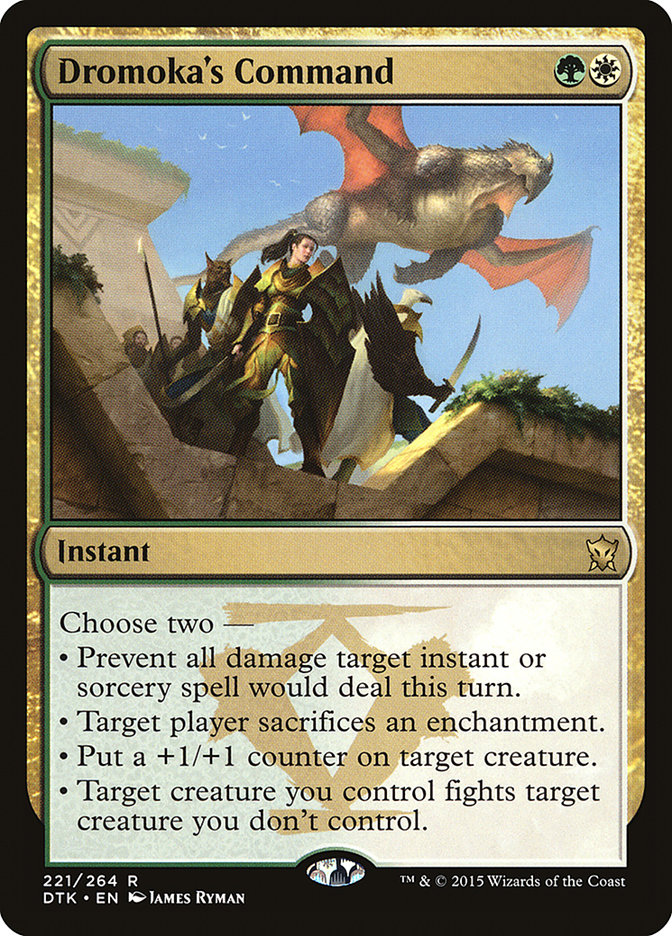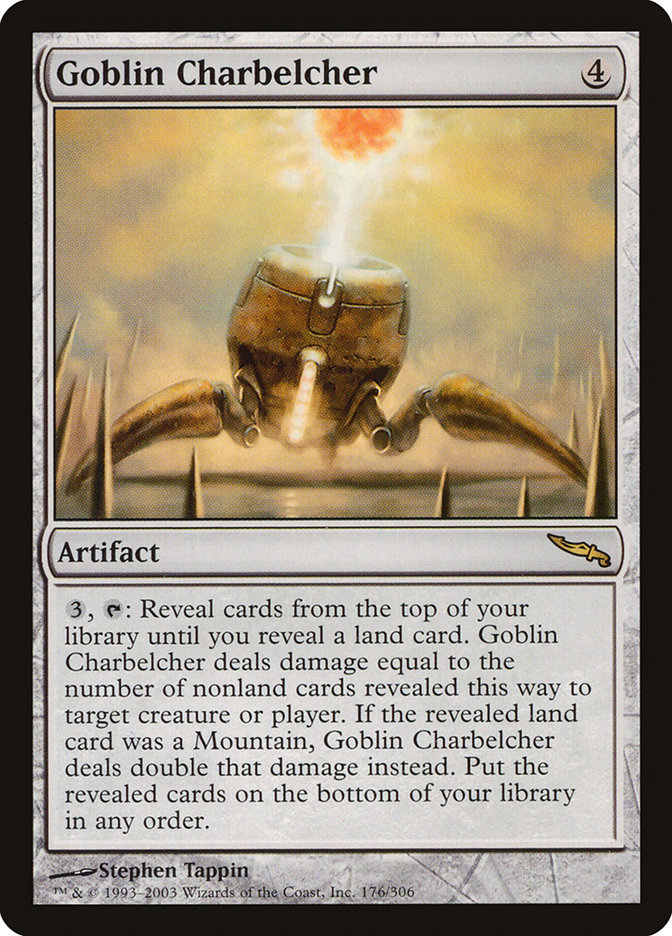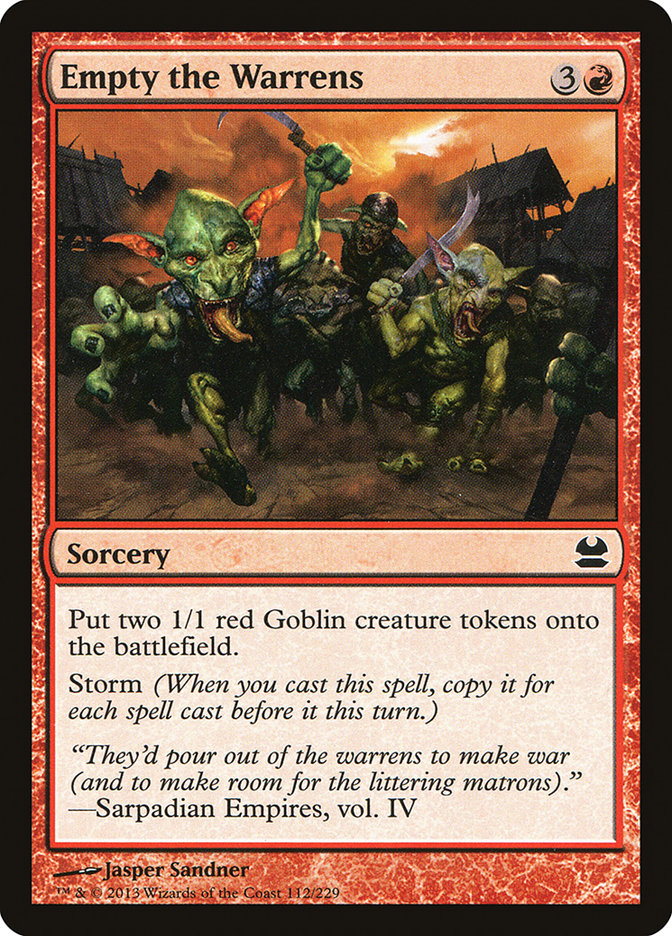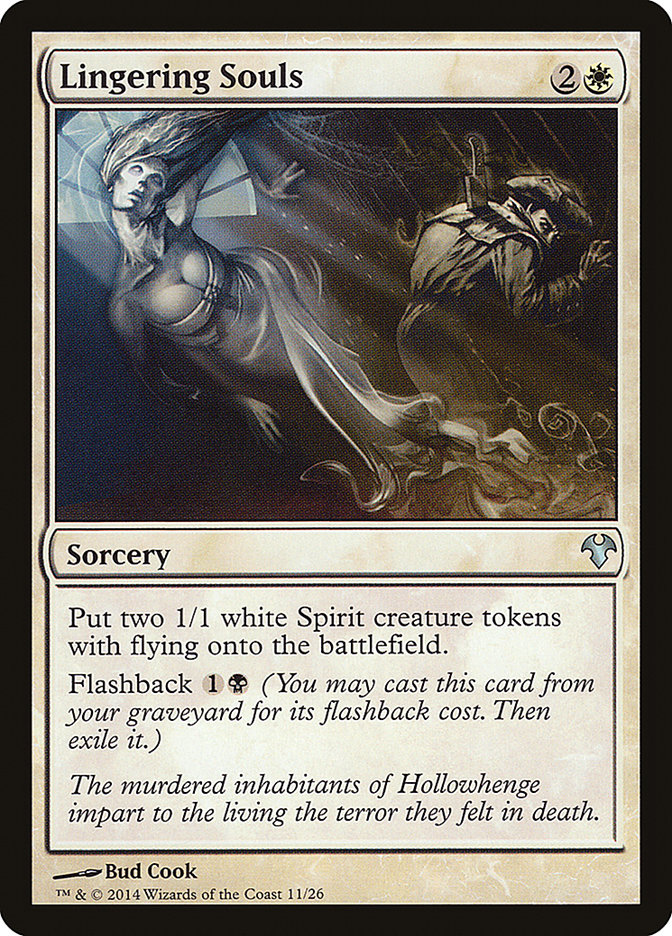This past weekend, the #SCGINVI set the stage for Pro Tour Shadows over Innistrad and Modern to come with the Invitational, an SCG Tour® Open, and two Classics. Given the results of #SCGBALT the weekend before, many things seemed to be in line, but there were still a few things that caught me off-guard between the four events.
Expected: Bant Company performed well.
Bant Company was an obvious deck post-rotation. It did all the things that were good pre-rotation and none of them rotated. Primarily, it puts multiple Reflector Mages onto the battlefield per game, which has been the easiest way to win for the last two months.
The big question was the mana. If you could still support three colors of spells without fetchlands, then the deck would be functional. If you couldn’t, it would be a pile. It turns out not needing an untapped land on turn 1 goes a long way and that you can easily hit an untapped land twice between turns 2, 3, and 4. That means you still curve out most of the time and the deck still offers the power level it did before. Considering said power level was high enough to compete with Siege Rhino and Rally the Ancestors, it’s more than enough for a world without those cards.
Unexpected: Bant Company performed this well.
Nineteen of the Top 32 decklists at the Standard Open were Bant Company, including five of the Top 8. Three of the Top 8 of the Invitational played the deck, and it represented seven of the fifteen 7-1 or better Standard decks.
Come on, the deck is all creatures. There has to be some way to beat it.
Wait. All your creatures have flash and are mostly two-for-ones or spell-like effects? Your opponent is stuck in binds where they don’t know which effect to play around on their turn? You can easily out-attrition people in many ways, including a good creature-land?
I’ve seen this one before:
Chris Andersen said it best: Bant Company is just Faeries. More accurately, it is the green version of the deck. Instead of just getting free cards out of exchanges, you get free cards that end up on the battlefield. I was only shocked it performed so well because I didn’t draw the comparison.
This is the real struggle against Bant Company. You can think you are ahead or at parity, and everything cascades out of control so quickly. This continues even deep in the game, as one Duskwatch Recruiter can start the whole chain again. Again, the difference between this deck and Faeries is very green: instead of having a game be stolen by exact lethal damage, the Bant Company player suddenly has an insurmountable set of threats and you wonder how things fell apart so quickly.
Expected: Mono-White Humans outperformed a field of Bant Company.
It is very hard to fight Bant Company on their level. It’s almost impossible to do so when your deck is full of 2/1 creatures to their 2/3 bodies and is lighter on card advantage.
So why is your white aggro deck trying to play Reflector Mage or Tireless Tracker? Maybe those cards are good against the rest of the field, but if Bant Company is your primary concern, you aren’t winning that way.
Instead, we saw Max McVety and Tom Ross playing low land counts and lots of one-drops. And they won.
Creatures (27)
- 4 Knight of the White Orchid
- 3 Dragon Hunter
- 3 Kytheon, Hero of Akros
- 1 Archangel of Tithes
- 4 Consul's Lieutenant
- 4 Thraben Inspector
- 4 Thalia's Lieutenant
- 4 Town Gossipmonger
Lands (20)
- 20 Plains
Spells (13)

Their decks were designed to punish Bant Company for playing a ton of three-drops and generally being unable to make two plays a turn without their namesake spell. Bant certainly has tools to fight back with, but meeting them in the middle is stating you think you can beat them heads-up with cards that say otherwise.
Expected: The Humans one-drops have condensed.
A week ago I was super-excited about splitting your one-drop creatures in Humans to avoid Declaration in Stone. Of course, a week ago the deck to beat actually played Declaration in Stone.
Now we see a bunch of 2/3s and Dromoka’s Command. Dragon Hunter and Expedition Envoy are actively bad, while Incited Rabble can attack freely. Incited Rabble also plays well against Reflector Mage by having a different name from the Town Gossipmonger you actually cast it as.
There’s also a bit of built-in resistance to Declaration in Stone when you are playing Town Gossipmonger. If you draw multiples, you can split them between transformed and untransformed, leaving them with different names and stopping the two-for-one.
Unexpected: The reworking of G/R Ramp.
G/R Ramp was in an odd place after #SCGBALT. It clearly put up some decent finishes and was the deck to beat going into the event, but it didn’t make a really deep run and looked approximately as expected.
This past weekend was a huge step forward for the archetype.
Against creature-based strategies, G/R Ramp often would struggle. The creatures weren’t sized well to incinerate with Dragonlord Atarka, and a World Breaker chain wasn’t good. You could tutor up an Ulamog, the Ceaseless Hunger, but that took too much time and was too exposed to the prevalent exiling removal of the format.
Creatures (12)
Planeswalkers (3)
Lands (25)
Spells (20)

Joshua Dickerson took several measures to solve this problem. First is practically pre-sideboarding against creatures. Four Jaddi Offshoot, four Kozilek’s Return goes a long way towards not dying. Kozilek’s Return also makes World Breaker into an actual turning point instead of a stopgap.
Nissa’s Renewal and four Ulamog, the Ceaseless Hunger also let you skip a lot of the nonsense that would hang up other ramp decks. Going straight to Ulamog usually keeps you alive for a turn, and the second Ulamog is likely enough to put the nail in the coffin. Exiling four things is a lot more than just exiling two when stabilizing.
Unexpected: Sphinx’s Tutelage.
Creatures (4)
Planeswalkers (3)
Lands (26)
Spells (27)
- 3 Fiery Temper
- 2 Lightning Axe
- 4 Tormenting Voice
- 4 Sphinx's Tutelage
- 4 Fiery Impulse
- 2 Send to Sleep
- 3 Magmatic Insight
- 1 Kozilek's Return
- 4 Oath of Jace
Sideboard

Noah is good, so it can’t be a total fluke, but Sphinx’s Tutelage wasn’t a good deck before it lost Treasure Cruise.
As a result, I’m assuming the success of this archetype comes as it can squeeze people between Chandra, Flamecaller and Sphinx’s Tutelage. Half the decks are soft against one, and the rest are soft against the other. I’m unsure this is actually better than Fevered Visions in the same spot, a la Jameson Perdue’s Goggles deck.
Unexpected: Belcher makes a comeback.
Spells (47)

Goblin Charbelcher finished in second and eleventh at the Legacy Classic in Columbus. I have no idea why it did well now, as opposed to any other random weekend. More Lands, Eldrazi squeezing out Miracles, and being a bit less vulnerable to Chalice of the Void than combo with cantrips are my guesses, but it’s anyone’s guess, really.
Expected: Belcher doing well makes me want to play it.
Belcher is a great deck. The stigma around it and Force of Will is not completely unfounded, but there’s a lot more play to it than you would expect. Because Empty the Warrens and Goblin Charbelcher require very different responses, just sequencing your mana accelerants properly can force your opponent’s hand and give you free wins.
There’s some true finesse here that is missed, and I really want a chance to demonstrate it. Sadly, I haven’t had many opportunities to play Legacy for around three years, but I’m thinking the time for me to sleeve up the cannon might be sooner rather than later.
Expected: Abzan Company is great.
Three players made Top 8 of the Invitational with Abzan Company: Logan Mize, Andrew Maine, and Ryan Fleisher. The deck is legitimately great and one of the most powerful shells in the format.
I opted to play the deck at Pro Tour Oath of the Gatewatch because it was so good against the existing format. The fact that it lined up well against Eldrazi was just a bonus. Banning Eye of Ugin wasn’t “killing a good matchup,” but more removing a deck that had random wins against you while also making your worst matchup of Tron a much worse deck.
My only concern would be true Ancestral Vision control decks, but you can fight back. If they go hard on Electrolyze and make your life difficult, you can Riftsweeper, Sin Collector, and Voice of Resurgence them out of cards. That’s one of the best parts of these creature toolbox strategies: only in extreme cases is it impossible to change five cards and win a matchup.
Expected: Sword of the Meek and Ancestral Vision were merely good.
While Gerry Thompson still remains the patron saint of Thopter-Sword, neither it nor Ancestral Vision had the blowout weekend some expected of them. Instead, we saw Burn bash a bunch of people durdling around with two of the slower engines in the format. Drawing three cards on turn 5 just doesn’t matter if you are dead on turn 4 most of the time.
As I stated last week, there is a time and place for everything. Right after the unbanning while everyone is trying to make these cards work is actually not the time for them. Grand Prix Charlotte in a month? That sounds like a better spot.
Unexpected: Jund and Abzan hung around.
Creatures (12)
Planeswalkers (3)
Lands (24)
Spells (21)

On the surface, Ancestral Vision seemed like it would be a huge problem for Jund. “Draw three cards” usually is a problem for decks trying to chip away at your resources. Add the demise of Splinter Twin removing its main prey, and Jund seemed primed to be a loser of the updated format. Instead of a drop in popularity, though, we saw more Jund at the top of the heap than Ancestral Vision.
I expect this was a two-level reaction. The best Ancestral Vision deck in mirrors was Scapeshift, and a lot of people moved that way instead of toward Grixis or Jeskai. People also tried to exploit the relative drop in speed of the format with Wild Nacatl decks like Zoo, Burn, and Death’s Shadow.
That left Jund in a field of good-to-great matchups. Add the drop-off in Affinity and Tron freeing up your sideboard, and suddenly the deck seems great again.
Expected: Eldrazi is still a deck.
Creatures (19)
Lands (24)
Spells (17)

As planned, Eldrazi Temple remaining unbanned meant April was not the end of the Eldrazi archetype. Unsurprisingly, the list that was best at ensuring it had a dual land was the one that survived. U/W Eldrazi was already known as unstable but powerful, so without Eye of Ugin it stood no chance of remaining consistent enough to play. G/R Eldrazi maintains the ability to jump the curve via Ancient Stirrings for Eldrazi Temple and Talisman of Impulse.
There is also the option of just playing Thought-Knot Seer in other shells. It has been very impressive in Tron, both blue-based and traditional Sylvan Scrying lists, and colorless mana is easy to slot into a number of decks. G/B Midrange and Death and Taxes are the two obvious options, but between painlands and Mutavault, the cost of splashing a 4/4 disruptive threat is very low.
Modern and Legacy have paths to wind from here, but the big question for Standard is what the Pro Tour will bring. The expected decks certainly create a real challenge to face, but the unexpected might bring us something even more exciting.




